Nurturing robust and fruitful tomato plants is both an art and a science. While farmers revel in the joy of watching those plump, juicy fruits ripen on the vine, they also face challenges that can defeat their efforts.
One such challenge is calcium deficiency, which can leave tomato plants weakened, leading to disappointing harvests.
Therefore, learning how to add calcium to tomato plants can be useful knowledge in addressing this issue.
Here, I will share with you practical steps and means to help improve the calcium level of your soil and, hence, your tomato plants.
So, if you’re ready to unlock the secrets to healthier tomato plants and elevate your gardening prowess to new heights, read on.
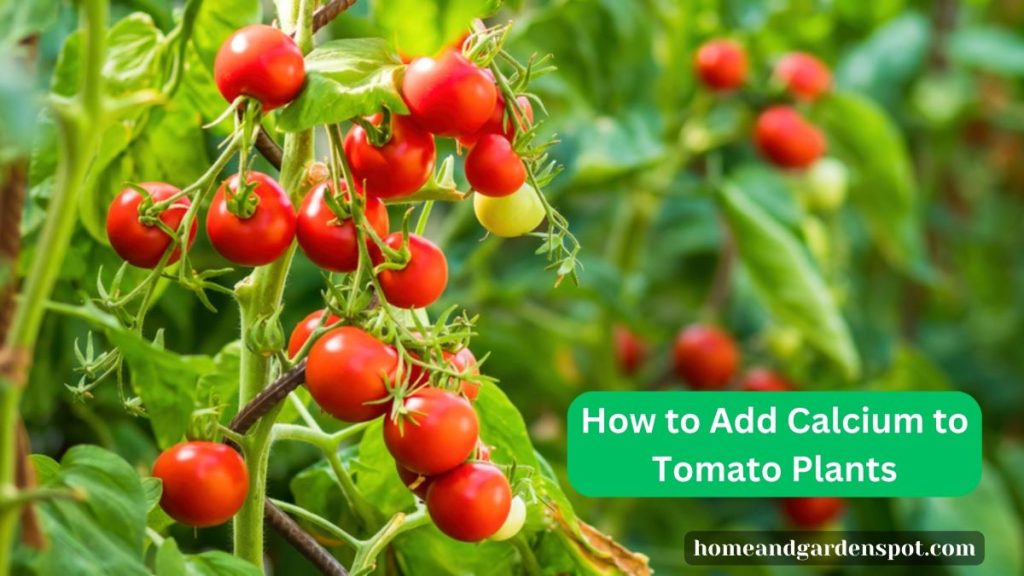
How to Add Calcium to Tomato Plants
Calcium is an essential element for the growth and development of tomato plants. Its presence provides structural stability, disease resistance, and improved fruit quality.
This means as a tomato farmer; you have the responsibility to ensure that each tomato plant receives the right amount of calcium at the right time.
Thankfully, there are a couple of ways to introduce calcium to your tomato plant itself or the soil for improved plant growth:
1. Using Foliar Spray
Foliar spraying is a viable means for delivering essential nutrients, including calcium, directly to the leaves of tomato plants. This method allows for quick absorption and can help address calcium deficiencies promptly.
If this sounds like what you need, then here is a step-by-step guide on how to use foliar spray effectively:
- Start by selecting an appropriate calcium source for your foliar spray. You can use calcium nitrate or calcium chloride as calcium sources. These are water-soluble and readily absorbed by tomato plants.
- Dissolve the chosen calcium source in water to create a calcium-rich solution. Typically, a concentration of 1-2 tablespoons of calcium nitrate or calcium chloride per gallon of water is suitable. Ensure thorough mixing to create a consistent solution.
- Apply your foliar spray solution during the cooler parts of the day, preferably in the early morning or late afternoon. Avoid spraying in direct sunlight, as this can cause leaf burn.
- For optimal results, apply the foliar spray once a week, especially during critical growth stages like flowering and fruit setting.
- Use a clean, handheld garden sprayer or a pump sprayer for precise application.
- Spray the calcium solution evenly over the entire tomato plant, covering both upper and lower leaf surfaces. Ensure good coverage without causing runoff.
- Pay extra attention to new growth, as it’s more receptive to nutrient absorption. These young leaves and developing fruits can benefit greatly from calcium supplementation.
- Regularly monitor your tomato plants for improvements in calcium-related issues. Using the Foliar spray method often shows noticeable results within a few weeks.
It’s important to note that foliar spraying is an effective short-term solution as it’s absorbed by the leaves directly. While this is true, it does not address the root cause of calcium deficiency at the root level.
Therefore, combining foliar spraying with soil amendments like lime or gypsum is a good way of providing a balanced, long-term supply of calcium.
2. Using Lime
When it comes to bolstering the calcium levels in your tomato plants, using lime is a tried-and-true method.
Lime not only provides calcium but also helps create a more favorable growing environment for your tomatoes.
There are two primary types of lime commonly used in gardening:
- Calcitic Lime: This type of lime, also known as agricultural lime, is primarily composed of calcium carbonate (CaCO3). It’s an excellent choice for raising pH and adding calcium to your soil. Calcitic lime dissolves slowly, providing a gradual and lasting effect on soil pH.
- Dolomitic Lime: Dolomitic lime contains both calcium carbonate and magnesium carbonate. While it can also be used to raise pH and provide calcium, it’s particularly useful if your soil is equally deficient in magnesium. The flip side of using dolomitic lime is that excessive magnesium can negatively affect potassium uptake in tomato plants.
To effectively use lime in adding calcium to your tomato plants, follow these steps:
- Before applying lime, it’s crucial to know your soil’s current pH. Aim for a pH range of 6.0 to 7.0 for tomatoes.
- Lime is most effective when applied in the fall or early spring before planting tomatoes. This allows it time to react with the soil and release calcium gradually.
- Spread the recommended amount of lime evenly across the soil surface. You can use a spreader or broadcast it by hand. Avoid piling lime in one spot, as this can lead to uneven calcium levels.
- After spreading lime, mix it into the soil by tilling or raking. This ensures that the lime is mixed thoroughly and its benefits are distributed throughout the root zone.
3. Adding Calcium Fertilizer to the Soil
Calcium fertilizers specifically formulated for plant use usually contain either calcium nitrate or calcium chloride.
Using calcium fertilizer to supplement calcium for your tomato plants is a straightforward process, but it requires careful attention to detail to ensure effective absorption by the plants:
- Ensure your selected fertilizer contains a significant percentage of calcium, typically expressed as CaO or CaCO3.
- Read the manufacturer’s instructions on the calcium fertilizer packaging to determine the appropriate application rate. This rate will vary depending on the product’s concentration and your specific tomato plant needs.
- Apply calcium fertilizer at the appropriate stage of tomato plant growth. Generally, it’s best to begin application when the plants are actively growing, typically a few weeks after transplanting.
- Apply calcium fertilizer directly to the soil around the base of your tomato plants. Scatter the fertilizer evenly around the root zone of each plant, being careful not to let it come into direct contact with the plant’s stem.
- After applying calcium fertilizer to the soil, water your tomato plants thoroughly. This helps dissolve the fertilizer and allows the calcium to be absorbed by the roots.
- Keep a close eye on your tomato plants and observe their growth and health. If calcium deficiency symptoms persist or reappear, you may need to repeat the calcium fertilizer application after a few weeks.
When using calcium fertilizer, be cautious not to exceed the recommended application rates, as excessive calcium can interfere with the uptake of other essential nutrients.
4. Using Organic Calcium Supplements
Organic calcium supplements like gypsum, bone meal, and seashell powder are excellent options to boost calcium levels in your tomato plants while maintaining organic gardening principles.
These natural sources of calcium offer a sustainable and eco-friendly approach to fortifying your plants.
1. Gypsum
- Choose high-quality gypsum, preferably agricultural-grade gypsum, for your tomato plants.
- Sprinkle the gypsum evenly over the soil surface around the base of your tomato plants. Aim for about 1 to 2 pounds of gypsum per 100 square feet of garden space.
- Gently rake or till the gypsum into the soil to ensure even distribution.
- Apply gypsum at the beginning of the growing season or whenever you observe calcium deficiency symptoms.
- Gypsum not only adds calcium but also improves soil structure, enhances water penetration, and reduces soil compaction.
2. Bone Meal
- Opt for a high-quality, organic bone meal from reputable sources, ensuring it’s free from additives or synthetic chemicals.
- Alternatively, you can ground your bone meal to ensure its potency.
- Scatter bone meal around the base of your tomato plants, aiming for approximately 1 to 2 tablespoons per plant.
- Gently work the bone meal into the soil using a hand tool or rake.
- Apply bone meal during planting or as a side-dressing during the growing season.
- Bone meal not only supplies calcium but also contributes phosphorus, which is essential for strong root development and fruit formation.
3. Seashell Powder
- Choose finely ground seashell powder, which is readily available at garden supply stores or can be prepared by crushing and grinding seashells.
- Sprinkle a layer of seashell powder evenly around your tomato plants, using about 1 to 2 cups per plant.
- Gently work the seashell powder into the soil surface using a rake or hand tool.
- Apply seashell powder at the start of the growing season or when calcium deficiency symptoms become evident.
- Seashell powder provides a slow-release source of calcium while also improving soil structure and enhancing drainage.
You can effectively use these natural sources of calcium to promote the growth and vitality of your tomato plants in an environmentally friendly and sustainable manner.
5 Causes of Calcium Deficiency in Tomato Plants
Calcium deficiencies don’t just happen; a number of factors bring them about. Below are some of the factors that often lead to loss of calcium in soil or its absence in your tomato plants:
1. Soil pH Imbalance
One of the primary causes of calcium deficiency in tomato plants is an imbalance in soil pH. Tomatoes thrive in slightly acidic to neutral soil with a pH range of around 6.0 to 7.0.
When the soil becomes too acidic (below 6.0), it can hinder calcium uptake by the plant’s roots.
This happens because acidic conditions release hydrogen ions, which compete with calcium for uptake.
As a result, even if there’s an ample supply of calcium in the soil, the plant struggles to absorb it efficiently.
2. Inadequate Calcium Uptake
Sometimes, the issue isn’t the availability of calcium in the soil but rather the plant’s inability to access it.
This can occur due to damaged or inefficient root systems, often caused by overwatering, compacted soil, or root diseases.
When roots are compromised, they can’t absorb calcium effectively, leading to deficiency symptoms even when calcium levels in the soil are sufficient.
Ensuring healthy root development through proper watering and soil management is key to preventing this cause of calcium deficiency.
3. Poor Water Management
Improper watering practices can wash away essential nutrients, including calcium, from the root zone.
Excessive rainfall or over-irrigation can leach calcium out of the soil before the plant has a chance to absorb it.
Additionally, inconsistent watering routines can lead to calcium imbalance within the plant, as the uptake of nutrients depends on a steady supply of water.
To prevent calcium deficiency, it’s essential to maintain a balanced watering schedule that keeps the soil consistently moist but not soggy.
4. Competition with Other Nutrients
In the world of soil and plant nutrition, calcium can face tough competition from other nutrients, particularly potassium and magnesium. These nutrients share similar pathways for uptake by plant roots.
When there’s an excess of potassium or magnesium in the soil, it can interfere with calcium absorption, leading to deficiency symptoms in tomato plants.
Balancing nutrient levels and avoiding over-fertilization with potassium or magnesium-rich fertilizers can help mitigate this cause of calcium deficiency.
5. Low Calcium Content in Soil
Sometimes, the soil itself lacks an adequate supply of calcium. This can be more common in regions with naturally calcium-poor soils.
Without a sufficient initial calcium reservoir in the soil, it becomes challenging to provide the necessary nutrients to your tomato plants, leading to deficiency symptoms.
In such cases, it’s essential to supplement the soil with calcium-rich amendments or fertilizers to meet the plant’s needs.
Read Also: What to Plant Next to Tomatoes?
5 Signs of Calcium Deficiency in Tomato Plants to Know
Calcium deficiency in tomato plants can manifest in several ways, including any of the following:
1. Blossom End Rot

Blossom End Rot is a telltale sign that your tomato plants are suffering from calcium deficiency. It’s a problem that no tomato farmer wants to encounter.
This condition manifests itself as dark, leathery patches appearing at the bottom of your tomatoes, rendering them unsightly and inedible.
These spots are a result of insufficient calcium reaching the fruit cells. Calcium is essential for maintaining the structural integrity of cell walls, and when it’s lacking, the cells in the tomato fruit break down, causing this blemish.
2. Stunted Growth

Another clear indication of calcium deficiency in tomato plants is stunted growth.
When calcium is in short supply, the plant’s ability to carry out critical functions, such as nutrient uptake and cell division, is compromised.
This leads to smaller, underdeveloped plants that struggle to reach their full potential. You may notice that your tomato plants are not growing as vigorously as they should, and they may appear weak and puny compared to healthy ones.
3. Leaf Curling
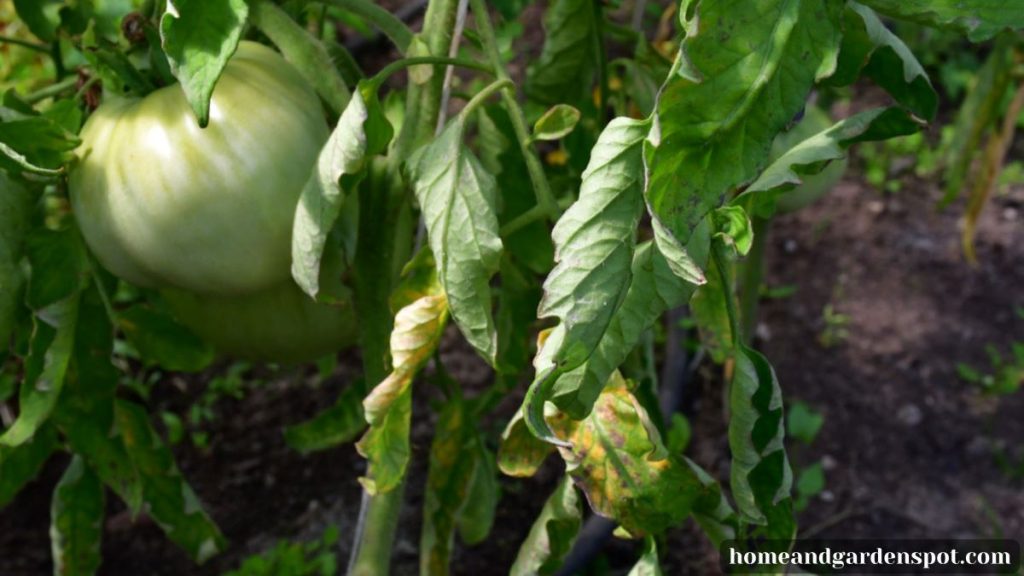
Leaf curling is a visual clue that something isn’t right with your tomato plants. When calcium is lacking, it disrupts the plant’s normal growth patterns, leading to the curling or distortion of leaves.
This can be particularly concerning because it affects the plant’s ability to carry out photosynthesis efficiently.
In simpler terms, your tomato plants won’t be able to produce enough food for themselves, which ultimately hampers fruit development and overall plant health.
4. Blossom Drop
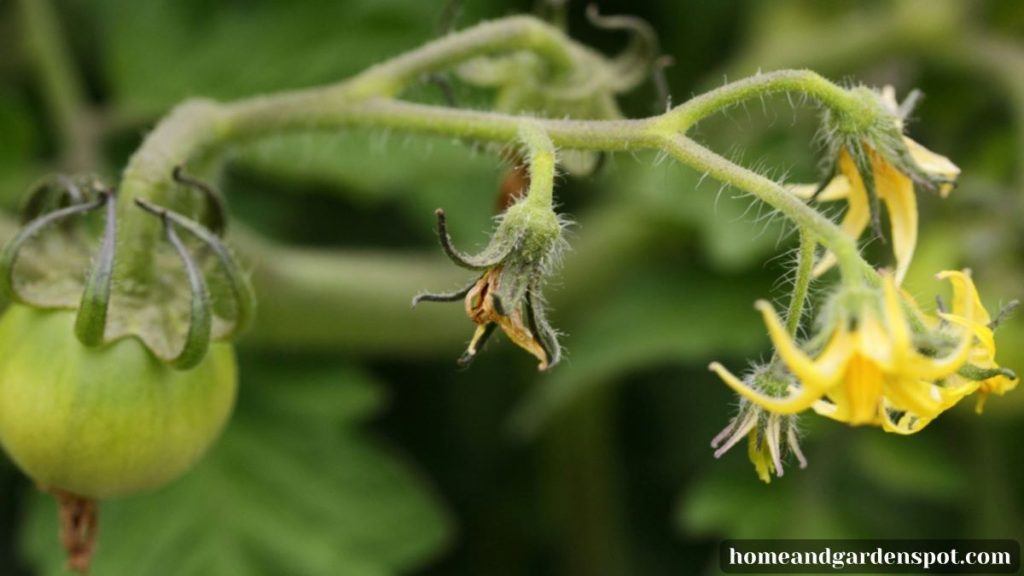
Tomato plants produce blossoms, and if those flowers fall off without setting fruit, then there is a reason to worry. This scenario can be attributed to calcium deficiency.
Calcium is involved in the formation and stability of the blossom and its connection to the plant.
When calcium levels are insufficient, the blossoms can detach prematurely, leaving you with fewer tomatoes than expected.
5. Cracked Tomatoes
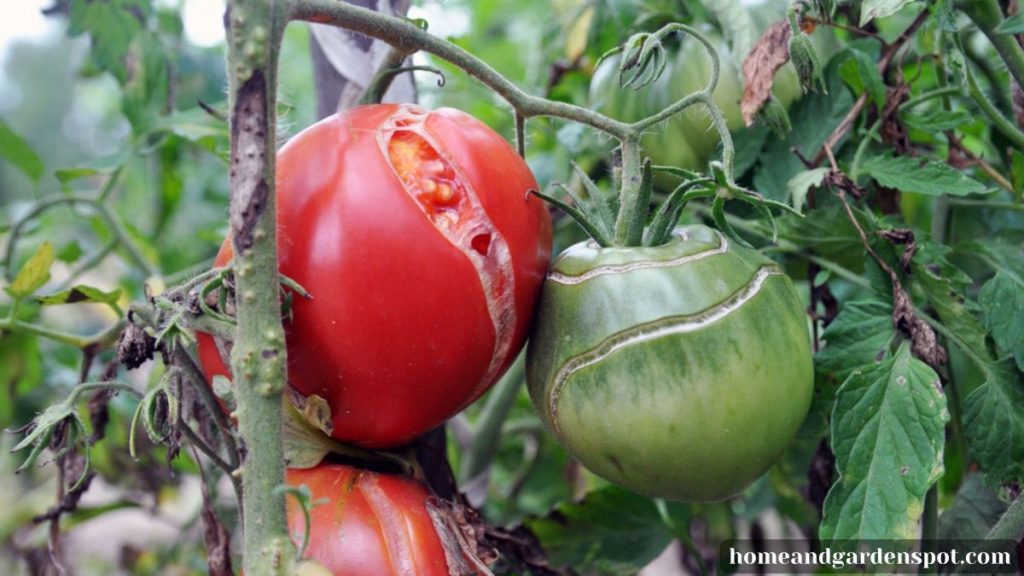
Cracked tomatoes are yet another sign of calcium deficiency. As tomatoes grow and swell with moisture, they rely on calcium to maintain their skin’s integrity.
When there’s not enough calcium to support this process, the fruit’s skin can crack, creating openings that invite pests and diseases.
These cracks can be both cosmetic and functional issues, affecting the appearance and edibility of your tomatoes.
Can I Use Ground Eggshells to Supply Calcium to Tomato Plants?
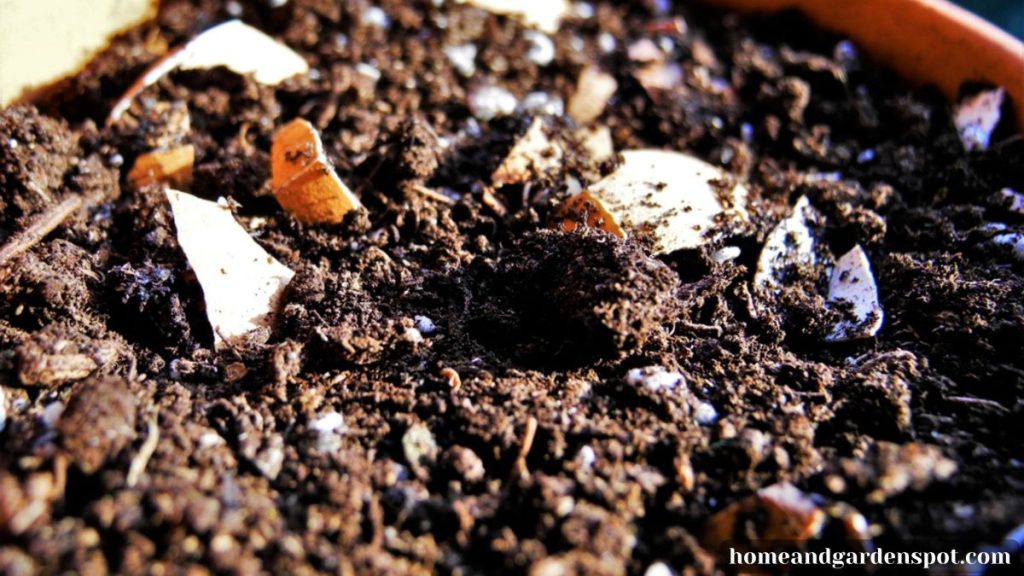
Adding ground eggshells to your soil can be an effective way to supply calcium to your tomato plants.
Eggshells are primarily composed of calcium carbonate, which is a natural and slow-release source of calcium.
However, when incorporated into the soil, eggshells gradually break down over time and, unlike other methods, might not produce the required calcium levels needed immediately.
Regardless, grounded eggshells provide calcium into the root zone of your plants. This can eventually help prevent calcium deficiency, which is a common issue in tomato plants.
Conclusion
Growing tomatoes can be both rewarding and challenging, but with dedication and care, you can achieve remarkable success.
Remember that healthy tomato plants not only depend on calcium but also factors like proper watering, adequate sunlight, and pest management.
Keep a watchful eye on your garden, promptly address any issues that arise, and nurture your plants with love and attention.
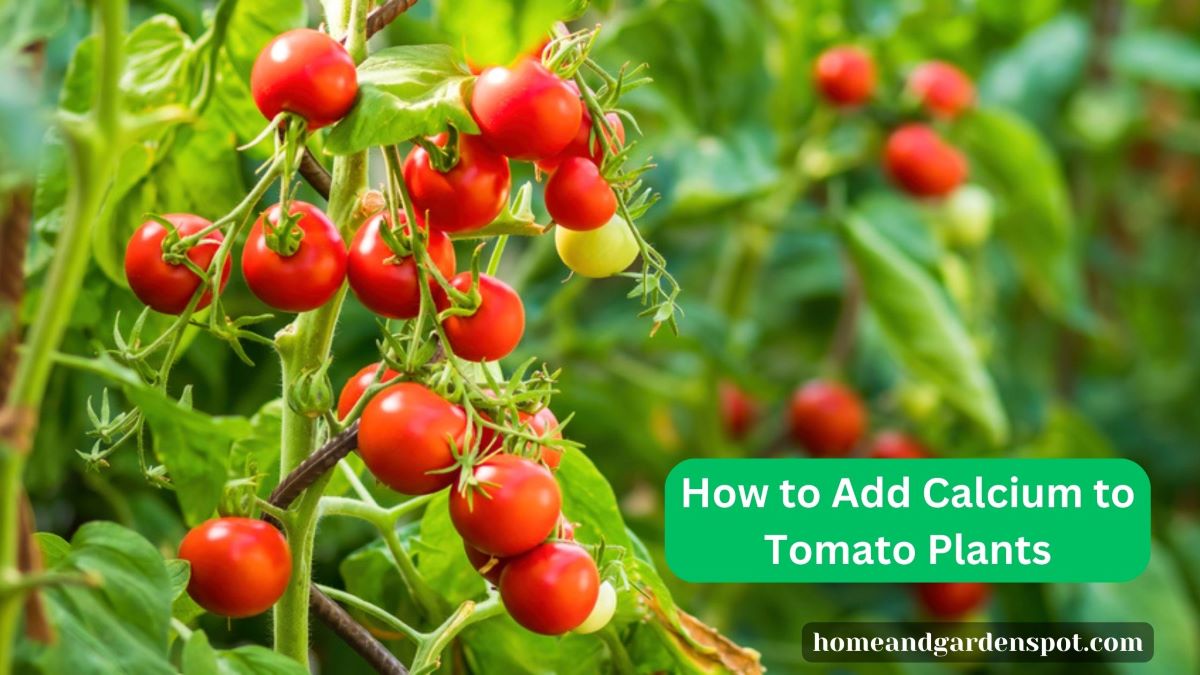
Leave a Reply